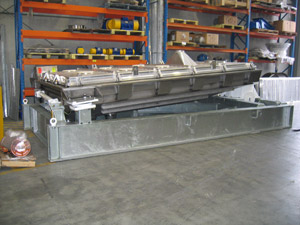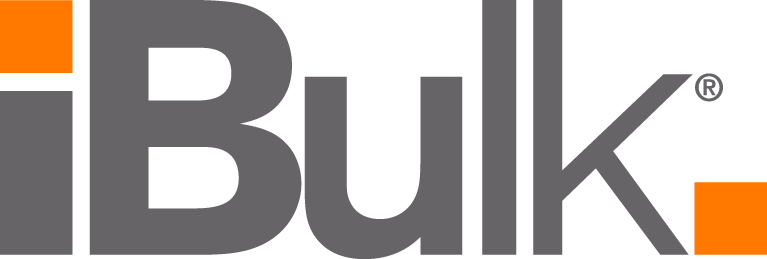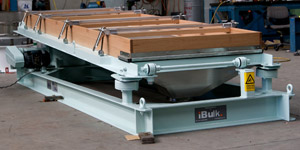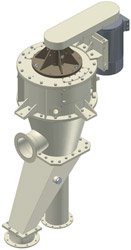 Finding solutions to assist clients get themselves out of sticky situations is a challenge that the team at iBulk® always enjoys. So when Bilfinger Berger Services knocked on the door to discuss the screening requirements for the rebuilding of the Yarraville Sugar Terminal in Melbourne, they knew it was a project that they could really sink their teeth into.
Finding solutions to assist clients get themselves out of sticky situations is a challenge that the team at iBulk® always enjoys. So when Bilfinger Berger Services knocked on the door to discuss the screening requirements for the rebuilding of the Yarraville Sugar Terminal in Melbourne, they knew it was a project that they could really sink their teeth into.
The requirement was to provide a solution to screen 120tph of sugar into the requirement of graded and caster sugar.
“It sounds simple when you describe it like that, but we actually worked on this project for two years prior to the order placement,” remarked Tony Webber, managing director, iBulk® Solutions. “This process involved working closely with several consulting engineers who were specifying the machinery for this plant upgrade.”
iBulk’s work history proved invaluable in the research and design phase, as they were able to draw on their broad range of experience to correctly specify the right machinery for the job.
“We were fortunate to have worked on many similar installations at a number of local sugar refineries and this experience played a major role in our ability to meet the client’s requirements,” explained Tony. “In addition, our long association with Rotex enabled us to access additional research data from installations around the globe.”
After all the options were considered, the final solution was to install three iBulk® Rotex 70 Series Gyratory Screeners to handle the grading and screening requirements at the sugar terminal, each of which handles one third of the total tonnage required.
“In addition to this requirement there was the need to ensure that at the out loading end of the graded sugar process all oversize contaminants were removed” explained Mr Webber.
This resulted in iBulk® installing three more Rotex Gyratory Screeners. Two of the machines have been installed to serve as Graded Sugar Scalpers and the other as a Caster Sugar Scalper.
Because of the unique challenges that working in the food industry brings, iBulk® had to ensure that in all cases clean surfaces were maintained through the use of stainless steel, aluminium and FDA approved materials. In addition, all carbon steel was hot dipped galvanised and intrinsically safe instrumentation was installed to monitor heat to prevent potential dust ignition.
“The success of this project is really a testament of our ability to work closely with the client and their consulting engineers to ensure the right outcomes for all parties involved,” added Tony.






 Finding solutions to assist clients get themselves out of sticky situations is a challenge that the team at iBulk® always enjoys. So when Bilfinger Berger Services knocked on the door to discuss the screening requirements for the rebuilding of the Yarraville Sugar Terminal in Melbourne, they knew it was a project that they could really sink their teeth into.
Finding solutions to assist clients get themselves out of sticky situations is a challenge that the team at iBulk® always enjoys. So when Bilfinger Berger Services knocked on the door to discuss the screening requirements for the rebuilding of the Yarraville Sugar Terminal in Melbourne, they knew it was a project that they could really sink their teeth into. In a recent study, Meat and Livestock Australia investigated the cost of rendering at several plants throughout Australia*. Their investigations revealed that the cost of producing one tonne of rendered product ranged between $130 and $253.
In a recent study, Meat and Livestock Australia investigated the cost of rendering at several plants throughout Australia*. Their investigations revealed that the cost of producing one tonne of rendered product ranged between $130 and $253.  iBulk Solutions, are delighted to announce the introduction of Ecutec Barcelona S.L. to their range of top quality handling and processing equipment. This comes about as the result of Sweco’s recent acquisition of Ecutec Barcelona S.L. for whom iBulk is a licensed manufacturer.
iBulk Solutions, are delighted to announce the introduction of Ecutec Barcelona S.L. to their range of top quality handling and processing equipment. This comes about as the result of Sweco’s recent acquisition of Ecutec Barcelona S.L. for whom iBulk is a licensed manufacturer.